|
The proposed approach has
been demonstrated using real 3D objects shown in Fig. 1. Each object was
represented from a particular aspect only using two reference views. Both
reference views have many features in common. The second reference
view was obtained by rotating the object about the y-axis by a small angle
(10-20 degrees). Knowledge of rotation between the reference views allow us
to enforce the rigidity constraints. In these experiments, we used groups
containing 6 point features. These groups were formed by two adjacent convex
groups of size 4. The groups extracted are highlighted by yellow lines in
Fig. 1. To order the points in a group during recognition, we choose the
common points as starting points and trace the rest of points
counterclockwise. A spare set of 3118 sampled views of the groups were
represented in a k-d tree. The manifold of each group was then learned using
the EM algorithm. The ratio of sparse to dense views used in this case was
33%. |
|
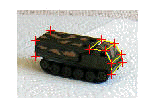
|
 |
 |
 |
|

|

|

|

|
| |
 |
 |
|
|
Figure 1. Five model objects with two reference views per
object |
|
Fig. 2 shows some of the test views used in our
experiments. Group of point features are extracted from the scene and used
to retrieved hypothetical matches from the k-d tree. Each hypothesis is then
ranked using the mixture models of the model groups. The verification
results can be seen in Fig. 2 where yellow lines correspond to scene groups
and the red lines to the predicted models. The MSE error was less than 8
pixels. |
|

|
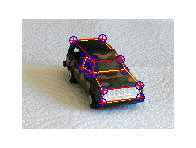
|
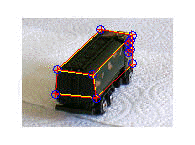
|
|
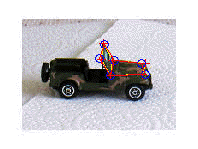
|

|
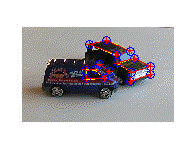
|
|
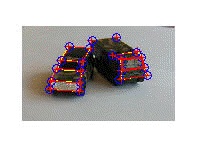
|
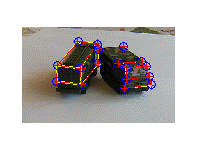
|
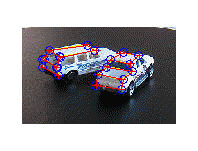
|
|
Figure 2 Test views & verification results |
|
Back to Top |
![]()